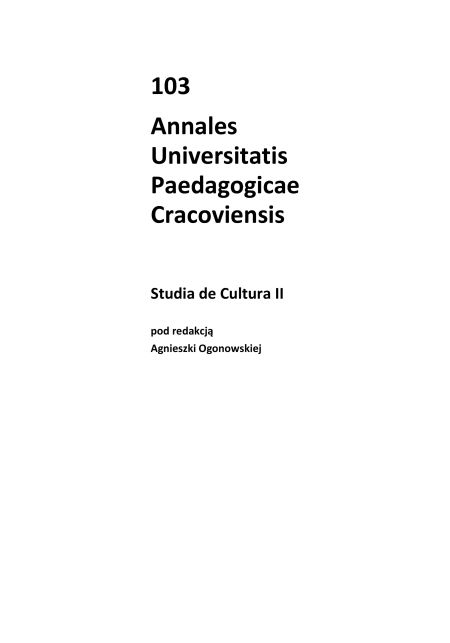Abstrakt
Film poster as a form of marketing communication
The aim of the article is to investigate a film poster as a marketing message in 1990-2010. 1990 marks a borderline in Polish culture. However, after years of monopoly, Polish films disappeared from cinemas. Thus, there has been a necessity to face the competitors i.e. US films. The point is not only in quality of the film art itself, attractive topics, better technical quality, but also - considering the ruthless laws of the market - in more intensive endeavors to promote Polish films. The poster is the most common advertising form of the film art and an important part of its marketing strategy. The paper is an attempt to present how the film poster has been functioning since 1990s, how it has played its marketing mission, what instruments have been used and how it has presented the film content. Contemporary film posters function like advertisements of products and services related to free time. They offer experience. Through the schemes applied they relate to emotions, which is justified from the marketing point of view. Poster representation of the film is an iconographic abbreviation of emotions that it offers. A potential viewer can usually read without major problems the author’s intensions and while watching the advertisement she/he chooses the emotions that she/he would like to experience. The promise of the experience is constructed and offered by means of pictures and words in a particular style. The author shows that although the poster is a complex phenomenon it is also standardized, which is helpful in creating a clear advertising message. A successful poster arises desire to buy goods or services. It follows the basic AIDA marketing principles. With the help of iconographic layer of picture and typography, the designer constructs a defined image directed at the target audience. At present, the poster is mostly rather an advertisement. Just like a commercial related to the brand it advertises, the film poster is consistent with the type of film. Thus, the film poster implies what the viewer can expect.
Bibliografia
Barthes R. (1970), Mitologie, w: Mit i znak, wybór i słowo wstępne J. Błoński, Warszawa.
Zobacz w Google Scholar
Barthes R. (1985), Retoryka obrazu, „Pamiętnik Literacki” nr 3.
Zobacz w Google Scholar
Bernstein D. (2004), Billboard, przeł. E. Ciszkowska, Warszawa.
Zobacz w Google Scholar
Bogunia-Borowska M. (2004), Reklama jako tworzenie rzeczywistości społecznej, Kraków.
Zobacz w Google Scholar
Bojko S. (1971), Polska sztuka plakatu. Początki i rozwój po 1939 roku, Warszawa.
Zobacz w Google Scholar
Fiske J. (1998), Wprowadzenie do badan nad komunikowaniem, przeł. A. Górczak, Wrocław.
Zobacz w Google Scholar
Folga-Januszewska D. (2009), Ach! Plakat filmowy w Polsce, Olszanica.
Zobacz w Google Scholar
Gwóźdź A. red. (1994), Po kinie, Kraków.
Zobacz w Google Scholar
Giżycki M. (2005), Mit plakatu, w: Mowa i moc obrazów. Prace dedykowane Profesor Marii Poprzęckiej, Warszawa.
Zobacz w Google Scholar
Kall J. (2002), Reklama, Warszawa.
Zobacz w Google Scholar
Kamekura Y. (1993), Polskie plakaty – cichy głos ludzkości, w: 100 lat polskiej sztuki plakatu, Kraków.
Zobacz w Google Scholar
Kisielewski A. (1999), Sztuka i reklama. Relacje między sztuką i kulturą, Białystok.
Zobacz w Google Scholar
Knorowski M. (2009), Efekt zwierciadlany, w: Pierwsze półwiecze polskiego plakatu 1900–1950, red. P. Rudziński, Lublin.
Zobacz w Google Scholar
Krampen M. (1991), O semiotyce plakatów polskich, w: Semiotyka wczoraj i dziś, pod red. J. Pelca i L. Koja, Wrocław.
Zobacz w Google Scholar
Krzystofek K. (1997), Prawa globalnej cyrkulacji mediów, w: Sztuka i kultura u progu XXI wieku, red. S. Krzemień-Ojak, Białystok.
Zobacz w Google Scholar
Lipiński E. (1990), Pamiętniki, Warszawa.
Zobacz w Google Scholar
Lubelski T. (2009), Historia kina polskiego. Twórcy, filmy, konteksty, Katowice.
Zobacz w Google Scholar
Międzynarodowy Salon Plakatu Filmowego, Łódź 1989=International Salon of film Poster, Lodz 1989 / [red. Katalogu K. Kuczyńska], Łódź.
Zobacz w Google Scholar
Mistrzowie plakatu i ich uczniowie (2008), koncepcja, wybór prac i teksty Z. Schubert, Warszawa.
Zobacz w Google Scholar
Polski plakat filmowy 1947–1967 (1969), oprac. Z. Schubert, Poznań.
Zobacz w Google Scholar
Rzepińska M. (1989), Historia koloru w dziejach malarstwa europejskiego, t. 1, Warszawa.
Zobacz w Google Scholar
Schmitt B., Simonson A. (1997), Estetyka w marketingu. Strategiczne zarządzanie markami, tożsamością i wizerunkiem firmy, przeł. M. Bernacki, Kraków.
Zobacz w Google Scholar
Soulages F. (2007), Estetyka fotografii. Strata i zysk, przeł. B. Mytych-Frajter, W. Frajter, Kraków.
Zobacz w Google Scholar
Więckowska-Lazar J. (1972), Symboliczny język plakatu, „Studia Estetyczne” t. IX.
Zobacz w Google Scholar
Zeegenicrush L. (2008), Twórcze ilustrowanie, przeł. J. Hübner-Wojciechowska, Warszawa.
Zobacz w Google Scholar
www.filmpolski.pl [dostęp 09–11.2010]
Zobacz w Google Scholar
http://www.google.pl/search?hl=pl&source=hp&q=parateksty&aq=1&aqi=g2&aql=&oq=paratek&gs_rfai= [dostęp 7.11.2010]
Zobacz w Google Scholar
http://mfiles.pl/pl/index.php/Model_AIDA [dostęp 7.11.2010]
Zobacz w Google Scholar

